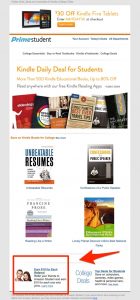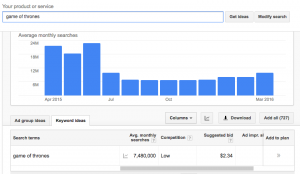
One of the biggest challenges facing businesses today isn’t garnering attention—in fact, with more and more emphasis on social media and digital awareness, it’s never been easier to get eyes on your business. Brands seem to explode out of nowhere. They pop up online and make a name for themselves, but very few do more than that. The struggle many companies face is turning that attention into something productive and profitable, effectively converting the user into a customer and prove the value of marketing within the organization.
Often businesses fail at that final step – to turn a prospect or searcher into a lead or customer. They need conversions. In a world that is increasingly becoming more mobile, businesses have to start to rethink the ways in which they are getting users to convert on their digital properties. Here are some basic questions to ask about your mobile presence:
- Is your website optimized for mobile?
- Are your forms easy to fill out on a smartphone, tablet or other mobile device?
- Are you reaching the customer where they are at—on social media apps or other mobile platforms—to capture their attention and get them to convert?
These are all questions that must be answered for businesses to improve their conversion rates and ultimately prove and improve their marketing ROI. It doesn’t matter how sophisticated your marketing efforts are, whether or not you can connect online and offline sales to prove your return, or to what extent you can get your business in front of the right audience—if you can’t take the necessary steps to move a user from the research to decision phase, you won’t thrive.
Prove and Improve Marketing ROI

Consider how jarring it must be for a prospect to search for a solution, find the ideal message in an ad or social platform, but then be directed to a homepage with no relevant message or way to continue the conversation. The evolution to a conversion-optimized experience isn’t as arduous as it might seem. But if one piece of the puzzle is missing, then all the attribution, dollars spent on digital marketing, and time put in by your team is wasted.
We see it all the time with our clients, many B2B enterprise companies that have established in-person relationships with their clients but struggle to break out into new markets and capture new audiences. Often it is because their website and landing pages haven’t evolved with their marketing programs. They are ready to adopt new forms of inbound media without doing the work required to optimize their sites and landing pages to ensure they are in line with the programs they are running. So much of the culture in marketing is to cast a wide net and hope something catches. But why waste time on things that might prove fruitless when you can do less and do it better? Don’t spend dollars where your time is being wasted.
Take a look at your marketing efforts, both in the past and currently. Every business is different, and every solution that takes your business to the next level in marketing is going to be different too. Ideally, your business would be strong in every aspect—SEM, SEO, email marketing, social media, etc. But whether you are just getting started or you have years and years of experience, it is essential to focus on what you can do now and do it right. Analyze what has worked and where your efforts are not giving you the return you would like to see. Then by focusing on the things that you find most effective to convert your audience, you’ll do more than survive—you’ll thrive.
A huge part of digital marketing that truly impacts your ROI is the conversion rate optimization. Whether you make changes to ad copy, test new imagery on your landing page, A/B test where you send users on your site, or something as simple as a swapping out your call-to-action for something more edgy, CRO is a vital part of enriching your marketing efforts.
Let’s look at the elements that make up a sophisticated marketing approach and how they’re affected by poor landing page experience due to poor CRO efforts.
Data & Analytics

Data, data, data. Never before has there been so much data at our fingertips. Every day, users are triggering hundreds, if not thousands, of moments online that add up to tell an important story. By following the users’ interactions on your website and landing pages with tools like heatmaps and form tracking, you can find out what is working for you and what isn’t.
Or maybe your marketing team is concerned with the performance of paid search ads, low CTRs, and poor conversion rates on-site. Take a look at the numbers provided by those platforms or dig into Google Analytics—this is where it helps to have real people on hand who know how to crunch the numbers—and figure out ways in which you can test new paid media programs.
This is why A/B testing is so important, especially with platforms like Pagewiz. The numbers won’t change if you don’t do something about it. Some absolute essentials for any landing page include:
- Move the form above the fold.
- Make sure your paid search ads are closely aligned with landing page copy for better quality scores.
- Try new visual creative.
Platforms like HubSpot allow you to serve different calls-to-action on your landing page depending on whether the user is a return visitor or not. And smart forms can capture different data from the same user who has already filled out the basic information (name, business, email, phone number) on your site in the past. These are easy and important steps to take to transform the user’s experience and make the more likely to convert, and all of this impacts your marketing ROI in the end.
These solutions sound simple, and they are! But so many businesses don’t let the data dictate their strategies; they don’t step back and look at what is actually happening in order to inform their efforts. Going with your gut is important, but if you’re contradicting the numbers that are right in front of you, something’s wrong.
Mobile Vs. Desktop Experience
There is no need to emphasize the fact that mobile experiences must be good to convince a user to hand over their information. We have all been in that place of bouncing from a page out of frustration—whether it is because of a poorly designed interface, the form is too long on mobile, or the site won’t load properly on your smartphone. Making sure your website is responsive and media landing pages are optimized for mobile is a must.
And that means the things that work on desktop, things your marketing team may have mastered, will not necessarily translate to mobile.
It is important to think about the ways in which people use mobile. While web searches on mobile surpassed desktop in 2015, the things people search for on their mobile devices are much different than desktop. Similarly, display campaigns on mobile apps and social media platforms need to be tailored to something convenient and convincing for a user to convert.
Facebook and LinkedIn, among many others, have auto-fill features that populate the usual information required on a form for the user in one easy click. This is a game-changer for mobile conversion optimization in your paid media programs. By removing this barrier to conversion—the inconvenience of clicking and typing out information in each form field on mobile—you’ll be enhancing your mobile performance and bringing in more opportunities to improve your marketing ROI.
Personalization: The 5th ‘P’ of Marketing

The famous 4 ‘Ps’ of marketing—product, price, promotion and place—have a new counterpart: personalization. As Rachel Ready, the VP of Digital Marketing here at BusinessOnline, says, “B2B marketers have the ever-growing problem of getting through to a user base that is being inundated with more and more messages. The way to break through is by using data to truly understand who your customers are and how to achieve that 5th ‘P’ of marketing: to speak to a customer in a personalized way –working toward a world where we can achieve 1:1 personalization at scale.”
Part of that personalization process is making the on-page experience tailored to them. A key to this is knowing your audience. Understanding who your customers are and making sure you optimize towards the common denominator amongst them will ensure a more relevant user experience. The closer you get to reaching your audience with the right content, the more likely they are to convert.
An Example
One of our largest clients, an enterprise telecommunications company based in the Midwest, underwent various optimizations over the last 12 months—that included both a website redesign to be responsive and mobile-optimized as well as a campaign restructure and focus on messaging to specific markets. Their efforts lead to a YoY increase in ROI by nearly 12% and an increased order value by 57% in FY16 over FY15.
Firstly, the client underwent a website redesign that included pages optimized towards mobile and tablet devices. The responsive design led to greater ease of use for the users on these devices, making forms easier to fill out and driving up mobile conversion rates.
Another major change that this client made was due to research and data derived from messaging around specific markets. By focusing at the city and state level, and messaging to users who were engaging with location-based content rather than their general product information, we were able to create and optimize campaigns better.
We helped them develop and launch new pages by product at the state level, leading to a better user experience because of a more personalized experience, higher click-through-rates in paid media, and an overall increase in conversions. Ultimately, based on this data and testing of the new location-based pages versus their general campaigns of the previous year, the client saw a positive return on marketing investment.
In the end, Listen to the Data

As we said earlier, look at the data. Are they spending more time on your site via mobile? Then focus your marketing efforts on mobile platforms and ad types. Are you nurturing your leads? Are leads signing up for emails more likely to convert in the long run? These are practices you should be not only putting into place but analyzing and optimizing to create the most personalized and relevant experience.
Business & Finance Articles on Business 2 Community(83)
Report Post




